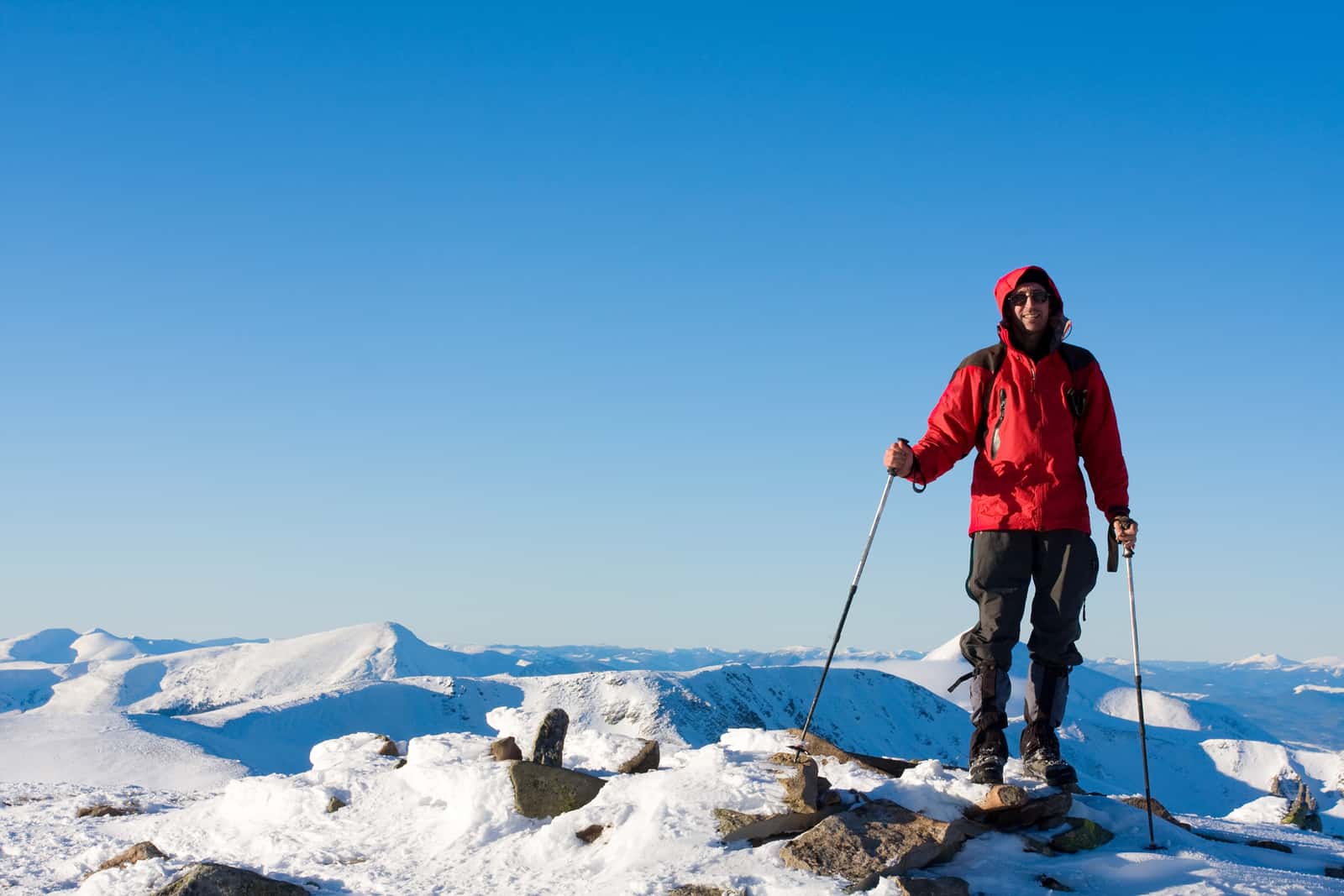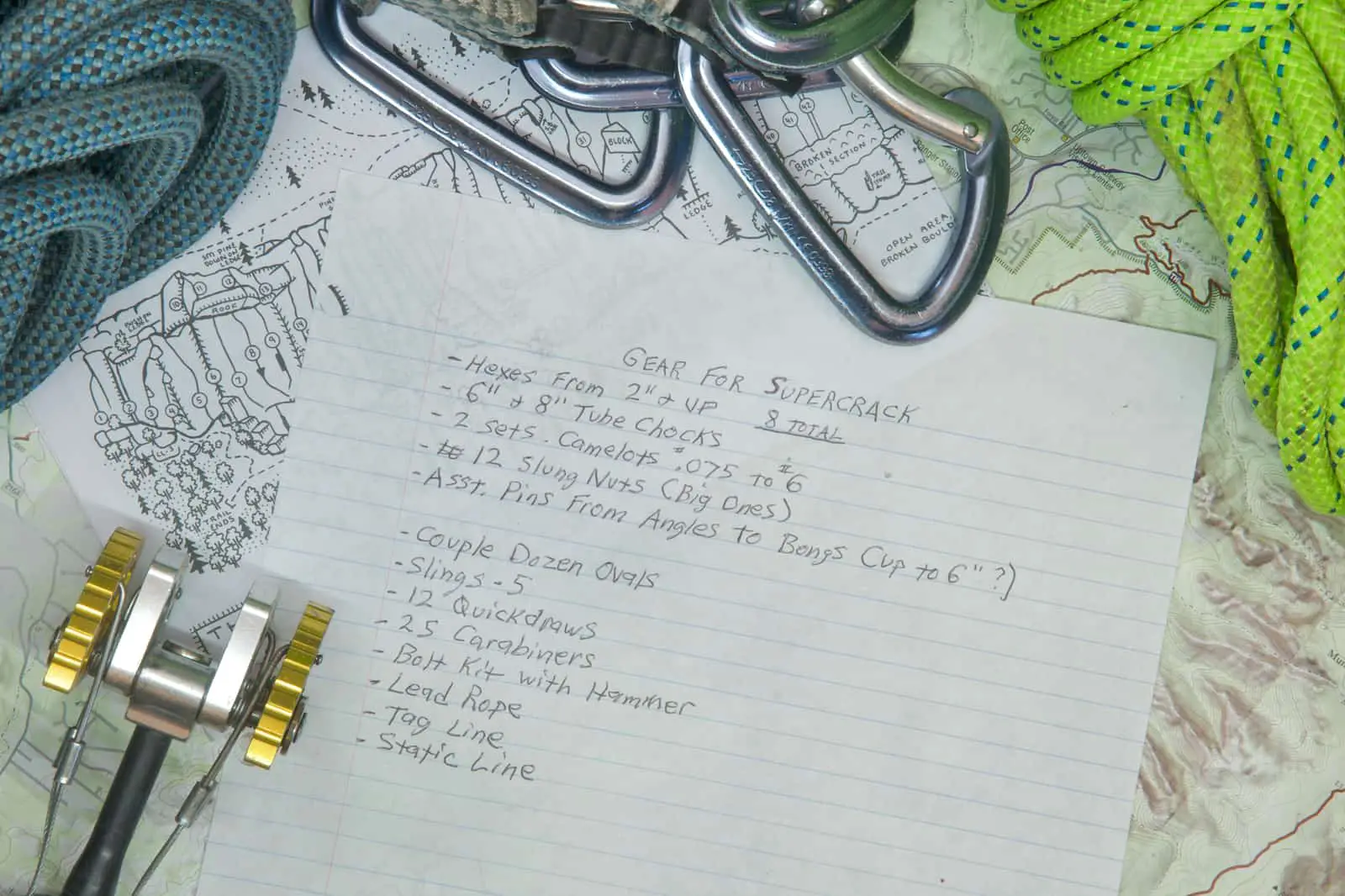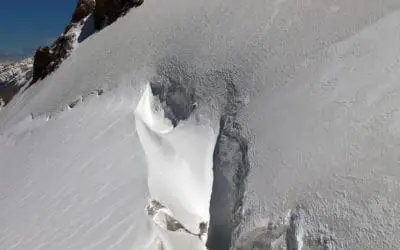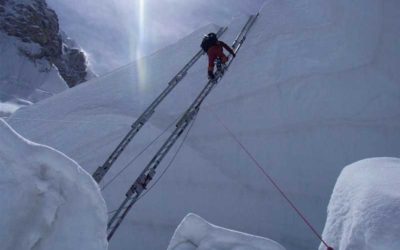
I certainly believe that preparation is key for any mountaineering trek, whether you’re just heading into the hills for a day or taking on Everest or Denali. This includes physical and mental preparation, as well as logistics and gear. Added to this, you also need to be prepared for potential emergencies.
In short, any mountaineer should do the following if planning for a new mountain climb:
- Read up on the mountaineering forums about your planned location
- If available, try contacting a local guide and ask for guidance
- Make sure that you have the required gear and that you are comfortable using it
- Read up on best weather seasons for your destination
- Make sure to be rested but not undertrained for the climb
Not long ago I wrote an article about the best weather seasons for mountaineering. If you are unsure about the mountaineering seasons I suggest you check it out. You can find my article here.
So many things to take into account! Down below I’ll unpack more in detail how successful mountaineers prepare before they take on a new trip.
Contents
Mountaineering Preparation Basics
Mountaineering is an awesome sport, but can also be incredibly dangerous. Before taking on a trip, make sure that you know what to expect – weather, terrain, amenities on the route, among other things.
Take the time to touch base with experts in that area or invest in a reputable mountain guide for the route you’re contemplating.
Regardless of the route you’re taking on, you’ll need to know some basics, such as navigation using a map or GPS. You’ll also need to understand weather conditions in the area you’re heading for and the type of technical skills you’re likely to need, such as rope work.
If you are starting from zero, I’d recommend searching the most common mountaineering forums for your mountain destination. A lot of people are very helpful and write about their experiences, so much can be learned just by doing this.
Planning the Climb
Planning is essential. I believe the old adage goes “failing to plan is planning to fail”. This rings true for mountaineering, since unpreparedness can get you in serious trouble, especially if you get lost and the weather takes a turn for the worst. Whether you’re taking on a short day trip or a longer hike, you need to plan properly.
- Plan the route you’re likely to take, comparing notes with other people who’ve done it before.
- Take time to understand the terrain you’ll face and the gear you’ll need for this.
- Before you leave home, double-check your gear, just to be sure that you definitely packed everything.
A Challenging Climb – Not Suicide
It’s also important to know how long you’re likely to take and how high the peak is. Once you understand the total ascent and the steepness of the journey, you ensure that your physical conditioning is on par with the challenge that you’ll face.
Be honest about your abilities (this includes not just you, but your entire group). If you plan according to your limitations, you won’t take on a route that’s simply too challenging.
There’s no shame in starting small and working your way up to the more difficult routes over time. Sure, pick a route that will challenge you, but within reasonable limits.
Some commercial routes have orientation programs. Check this out if you’re new to an area – it will definitely help you get your head around what’s ahead.
Mountain Footwear for Different Seasons
Your boots are your most important piece of equipment, since mountaineering and hiking alike relies on steady feet. Make sure that your boots are suitable for the terrain you’re likely to cover, that they’re properly broken in and in good repair.
Take the weather into account when checking your boots – in summer you’ll be fine with a good pair of hiking boots, while you’ll need something compatible with crampons for alpine climbing.

Gear Preparation Tips
If I don’t have enough time to make a small climb before a new challenging climb and I have new untested gear, I have an unusual habit of testing my equipment at home. What I do is, I equip all my gear as If I was climbing – crampons, helmet, everything – and I just go for a walk in my garden.
In my garden I try doing some squats, moving around and feeling how everything fits. If something doesn’t feel quite right I will most likely notice right away, and this way I feel so much more comfortable the days before the climb.
You definitely don’t want to realize that your helmet strap is faulty as you take your first steps up the mountain. By doing the garden walk, this is almost always avoided.
More Equipment Checks
Check the gear that you’ll need for the route you’re planning. Make sure that everything is in good working condition – even go try it out beforehand if you need to. Don’t pack too much gear if you can help it, since this will make your pack super heavy, making your going much tougher than it needs to be.
Check that your clothes are suitable for the trek as well. Clothes should be breathable for high exertion, but you should also pack something fleecy to keep you warm at night an something wind and water proof to keep you warm and dry if you do get stuck in the rain. Socks should be comfortable and thick enough to prevent blisters.
- Pack a map and compass and make sure that you know how to use them. Using a GPS is fine and much easier than using a map, but you could run out of battery and get seriously lost.
- Take a flashlight and spare batteries. This should be logical. A headlamp is the easiest and most practical option for a flashlight.
- If you’re overnighting and planning to cook your own food on the way, take waterproof matches. And alternative to this is a flint kit.
- A penknife, like a Swiss army knife, and a whistle are also really useful tools. In case of emergency, use the whistle to attract attention. The international signal for distress is six blasts, repeated every minute.
Food prep
Take food that is high in energy and preferably tasty too. Make sure that it won’t spoil before you need it. Always make sure that you pack emergency rations, just in case you get stuck somewhere for longer than anticipated.
It’s helpful to pack foods that are lightweight and requires very little preparation, like beef jerky and nuts.
My favorite Weather Forecast
Check the weather forecast during the weeks (preferably, otherwise days) before you start. If things aren’t favorable, delay your summit ascent by a day. Once you’ve started, you probably won’t be able to turn back easily, so it’s often worth the slight delay, making your ascent easier and safer.
For mountain weather forecasts, I like to look at mountain-forecast. From my experience they are a great source of information when it comes to forecasting the weather in the mountains (internationally).
Pack This Life Saver (if terrible weather)
Mountain weather is notoriously unpredictable, so always be prepared for the worst, even if you set out with blue skies and the weather forecast says nothing about storms or rain.
With this in mind, pack an emergency shelter. This will offer some protection against the elements and could save your life. These are lightweight and quite durable, so you won’t be lugging along too much weight. You’ll be glad you have if you ever end up needing it.
Mountain Climbing Emergencies Prep & What to do
We all like to think that we’re invincible. The truth is that accidents are, unfortunately, common in the mountains. Planning your actions in an emergency could be the difference between making it out in one piece as opposed to becoming part of less fortunate statistics.
If you’ve prepared properly for common emergencies, you won’t have to think that much if they do happen, speeding up your reaction time. This is great, since your judgment is likely to be somewhat impaired under stress.
Here are some things to keep in mind if you do have an emergency situation:
- Keep calm. Rushing things could make the situation much worse.
- Assess the condition of the person who’s injured. Can they be evacuated by the group, or do you need extra assistance?
- If you have reception, you can call for help. If you don’t have reception, someone (preferably two people, if your group is large enough) will have to hike to where you would have reception or can get help. Make sure that you write down the location and description of where the injured person is, since this will make it much easier for a rescue team to get there. Along with this, write down the nature of the injury, helping the rescue team come prepared for whatever they will find.
- If you suspect that the injured person sustained spinal injuries, don’t move them at all. If that’s not the case, move them to shelter as best you can. In either case, protect the person against the elements and keep them well hydrated. This will aid the rescue and recovery process.
- Don’t go too far from the route you’re taking, since this is where the rescue team would come looking for you. If you need to move far away in order to find shelter, leave a sign indicating where you went.
- Take your phone with you, sealed in a waterproof bag. Also take hand-held radios, since this would enable you to communicate with the rest of your group if you are out of sight of each other. If you tune into the correct frequency, you’d be able to contact the local mountain rescue team as well.
- Pack a first aid kit and know how to use it. It’s definitely a benefit to go for basic first aid training, not just for trekking, but also in daily life.
Mountaineer Training Prep
You need to be fit for a successful summit. Here, you can take on any number of training regimes, depending on the level of fitness you’re aiming for and where you are at the moment.
Some good options include running, swimming, aerobics and actual hiking. Taper your training just before the climb in order to not overexert yourself before you need to really perform.
Don’t Endanger Your Group
If you have a history of cardiac or pulmonary issues, you should consult your physician before taking on mountaineering, since this activity could be dangerous to your health. This could also put the rest of your group at risk, if anything happens to you in the mountains and you get stuck in bad weather because of the delay.
Mental Strength in Mountain Climbing
You need to be mentally strong when the going gets tough. This could either be that everything is going according to plan, but the going is really tough, or it could mean that things took a bad turn. Either way, you need to keep your head straight in order to deal with things.
You’re the only person who could really know what you need to keep your head straight. Take this into account and think through everything that could happen on the trail. Think through your response in each situation, pre-empting how you would feel and how you would deal with it on an emotional and intellectual level.
It also helps to travel in groups, since your group members could help you push through when you’ve hit a low spot.
Conclusion
Preparation and proper planning is essential if you want to be a successful mountaineer. Take your route, the terrain and your own limitations into account when planning and preparing.
Make sure that you’re mentally strong as well, enabling you to push through and keep your head straight when the going gets tough.
Alright, enough reading and prepping, now the only thing left to do is to actually get going. Happy Adventures!
Written by Felix

About me
Hi! I’m Felix. When I’m not spending time out in the mountains, I like to write about my hobbies. That is how Mountain Homies was created. On this site, I try to gather all the juicy information about Mountaineering that I have learned since I started. Happy adventures!
Related Articles
3 Ways to Spot and Reveal a Crevasse (And Avoid It)
So, how do you spot a crevasse and – more importantly – avoid falling into one? In this article, I will have a look at what crevasses are and how to detect them…
5 Ways of Knowing If Your Climbing Shoes Are Too Big
It has almost become a prestige among climbers to be able to boast about how small and tight climbing shoes can be used. There is therefore a lot of talk…
3 Clever Ways of Crossing A Crevasse
When you’re mountaineering in snow country, you will undoubtedly encounter some crevasses. These are scary, since you don’t always spot them…
Stay Up to Date With The Latest News & Updates
Join Our Newsletter
The owner of this site is a participant in the Amazon Services LLC Associates Program, an affiliate advertising program designed to provide a means for sites to earn advertising fees by advertising and linking to amazon.com.



